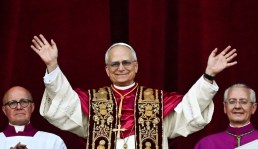Timothy Dolan: The Charismatic Cardinal Bridging Divides in the Catholic Church
Timothy Dolan stands out as one of the most recognizable leaders in the Catholic Church today. Renowned for his charisma and natural authority, Dolan’s impact reaches far beyond his role as Archbishop of New York. This article explores Dolan’s influence, his approach to leadership, and his role in current Church dynamics.

A Brief Introduction to Timothy Dolan
Timothy Dolan has served as Archbishop of New York since 2009. Known for his deep, resonant voice and jovial personality, Dolan has connected with people inside and outside the Church. His leadership skills, honed during his presidency of the U.S. Conference of Catholic Bishops (2010-2013), are often described as both unifying and strategic.
According to a detailed analysis by La Croix International, Dolan is seen as a powerful conservative voice but also as a figure adept at building bridges between opposing worlds. Despite his outspoken positions, especially regarding U.S. politics, Dolan remains respected for his ability to engage with various communities and celebrities, while maintaining his faith at the forefront.
The Cardinal’s Approach: Evangelization and Public Engagement
Dolan sees evangelization as central to his mission. As highlighted by the National Review, he emphasizes the importance of witnessing to Jesus in daily life, echoing the messages of recent Popes. His energetic involvement at public events—even at high-society gatherings like the Met Gala—showcases his willingness to step beyond traditional boundaries to share the Church’s message.
Dolan’s knack for public engagement has given him both admirers and critics. Supporters praise his authenticity and ability to humanize the Church in complex times. At the same time, some observers point to his political leanings as a challenge, particularly in a Church increasingly defined by varied perspectives.
Dolan’s Influence in the Modern Catholic Church
Within the College of Cardinals, Timothy Dolan is considered a major American figure. He was created a cardinal by Pope Benedict XVI in 2012 and has frequently been mentioned as a key voice influencing the direction of the Church. His keen strategic sense and political acumen have positioned him as a natural leader among American clergy.
However, Dolan’s influence is not without limits. In recent years, his standing among fellow bishops has faced tests due to shifting political and ecclesiastical landscapes. The election of Pope Leo XIV, Robert Prevost, the first American Pope, signals evolving priorities within the Church, with Dolan’s more conservative stance sometimes at odds with a predominantly "Bergoglian" episcopate that values continuity and progressive reform.
Bridging Tradition and Change
Timothy Dolan’s story is one of balancing tradition with the need for change. While firmly rooted in the core beliefs of the Catholic faith, he understands the importance of modern communication and engagement. As the Church faces unprecedented challenges, Dolan’s role offers insight into the possible directions Catholic leadership may take in the future.
For those interested in Church governance and the upcoming conclave, Dolan’s experience and perspective remain highly relevant. His approach to bridging divides, whether social, political, or religious, will continue to shape discussions about the future of Catholic leadership.
Conclusion
Timothy Dolan is more than just a cardinal; he is a figure who symbolizes both the heritage and the ongoing transformation of the Catholic Church. His charisma, leadership, and willingness to engage with all corners of society make him a fascinating example of modern ecclesiastical authority. As debates continue about the future of the Church, Dolan’s story invites us to consider how faith, tradition, and dialogue can come together for meaningful change.